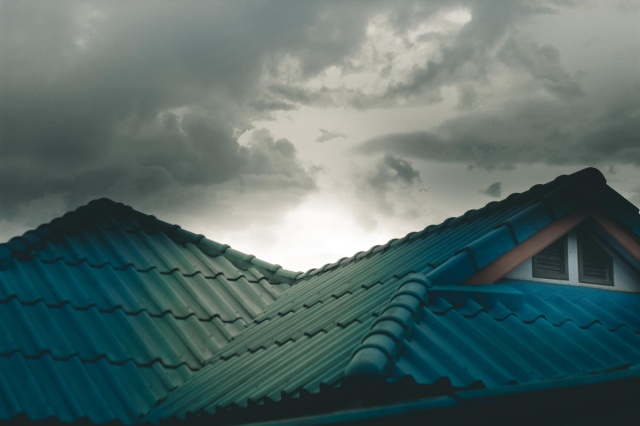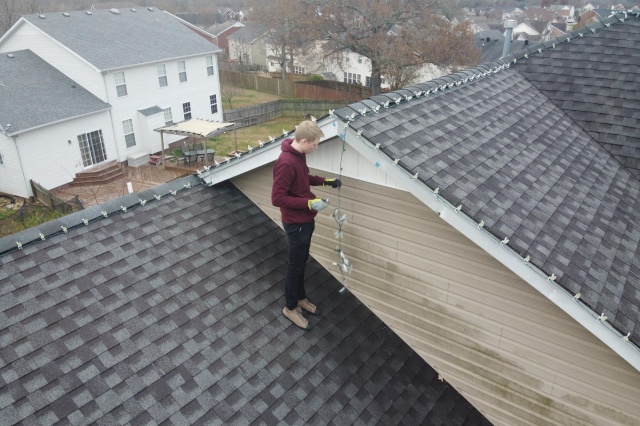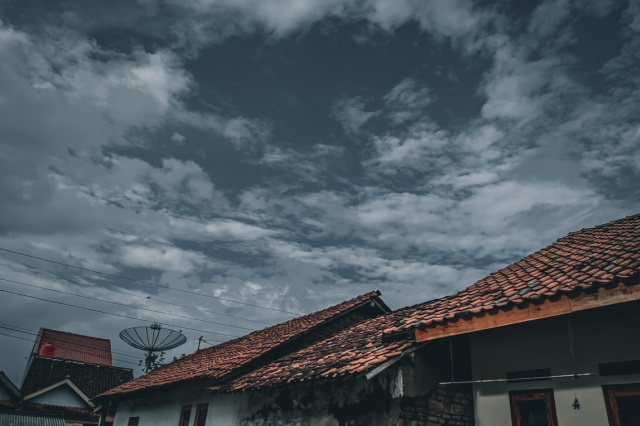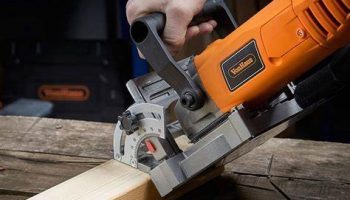Many homeowners are under the impression that summers are all about “Mr Sun”.
And sure, summers are fun. It’s all about chilled lemonades, beaches, pool parties, but hang on there is another thing to keep in mind – summer storms. The raging summer storms lose their cool very quickly, and soon you are sitting in a house without a roof.
But the good news is that you can secure your home roof before summer storms hit. In this article we offer you the simple steps that can help you protect your home from roof damage. So follow these simple steps to protect your roof from damage before the bad weather strikes.
Understanding the Impact of Storms on Roofs

Storms are the worst kind of situation for any homeowner when it comes to roof damage. Your roof endures strong heavy winds, rainfall and hailstorms. So, it is crucial to do roof inspection to check for small damages on your roof regularly. When you find small issues on your roof you can address them and avoid turning them into major issues.
When a storm hits your home, the major impact is on your roof. The force of the storm can easily lift shingles or tiles off your roof creating leaks. The water then seeps through these small openings creating major damage to both roofing structure and your home.
The major damage any roof endures is when hailstorms occur that create holes or cracks in the roof. This weakens the structure of your roof over time leading to major issues in your home.
Moreover objects like branches or debris transported by the wind have the potential to cause damage to your roof. While this harm might not be easily visible at first it can weaken areas making them more prone to damage, during storms.
These weakened spots can eventually result in leaks, structural issues and higher repair expenses. It’s crucial to check your roof for any indications of damage and deal with them promptly to maintain its longevity and strength.
How Can Spring Storms Damage My Business’ Roof?

Different types of weather can have impacts, on your commercial roof:
- Heavy rain may weaken and erode shingles leading to potential water damage.
- Hails can put dents on roofs, crack shingles, and create holes.
- Lightning strikes can ignite roofing materials without protection.
- Strong winds and tornadoes are capable of ripping off shingles and causing damage to your roof, with flying debris.
Pre-Storm Roof Inspection
Before a summer storm arrives, getting your roof ready by having an inspection done is important. It’s an idea to bring in a roofer who can spot any weak areas or damages on your roof and take care of them ahead of the storm.
Key steps, for a storm inspection include:
- Checking for loose or damaged shingles, tiles or flashing
- Clearing out gutters and downspouts to prevent water flow blockages
- Examining the chimney and vents for cracks or damage
- Inspect for mould or mildew growth on your roof as it could signal hidden roof leaks
- Attics are often overlooked so inspecting the attic for water damage or leaks
How to Spot Roof Damage After a Storm Hits?

No one can predict the intensity of a storm. So even with all the precautions and preparation in the world your roof might still get damaged. That necessarily doesn’t mean you would ignore your roof inspection.
It’s important for you to know how to spot these damages on your roof. This helps you take care of them immediately and prevent further issues in your roof through roof inspection.
Some signs of roof damage after a storm include:
- Missing shingles or tiles
- Cracks in the roofing materials
- When you are inspecting your roof look for loose or damaged flashing around vents, chimneys, or skylights
- Try looking for water spots on your ceiling or walls while roof inspection inside your home
During your roof inspection in your home, look for indicators like leaks, absent shingles or areas that appear to be sagging. If you spot these indicators then immediately get in touch with roofers to evaluate the situation. They will guide you on all the required repairs and carry out them as well. Taking action on can help avoid extensive and expensive damage, down the line guaranteeing the durability and security of your roof.
Storm-Resistant Roofing Materials
When getting ready, for storms it’s crucial to pick the roofing material. Listed below are some options of storm-resistant roofing materials and how they hold up during storms for your information.
- Asphalt Shingles
These kinds of shingles are cheap and easy to put in place. Not the sturdiest when it comes to storms.
- Metal Roofing
Known for being tough and able to withstand wind, hail and fire than asphalt shingles. Plus they last
- Tile Roofing
Offers durability and looks nice but can be heavy on your wallet as well as on your roof structure.
- Slate Roofing
Lasts a time but comes with a high price tag and requires a strong roof structure.
Shingles that are impact-resistant are designed to endure wind and hail damage. So opting for shingles that are resistant to impact is necessary for storm-prone areas. This helps your roof from damage and saves you money as well.
You must consider the pros and cons of different types of material based on your home requirement. This helps you decide on the correct shingles for your home roof.
How Can Regular Roofing Maintenance Shield My Business From Spring Storms?
Before a hailstorm hits it might sound strange to fix your roof. However dealing with weather while having holes or cracks in your roof can cause leaks, mold, structural issues and damage to your belongings.
Fixing all these problems later could end up costing more than maintaining your roof. You might face disruptions to your routine during the repairs adding more stress on top of everything else.
To prepare for a spring storm consider scheduling a free roof inspection. The team of commercial roofers can assess any damage to your building, suggest personalized solutions and carry out any repairs.
Through regular roofing maintenance services you can extend your roof life and keep it in top condition. When your roof is in great condition it can withstand future storms without damaging your belongings and home.
Remember: Preventive Maintenance is More Cost-Effective Than Repairs
When you schedule regular inspections for your roof you save money. Preventing extreme damage to your home roof and belongings, that will cost you money to replace. You invest in maintaining the roof regularly for a fraction of the cost of replacement. This way you get to save money.
It also allows you to plan and budget for these inspections and repairs in advance. Or else you face the risk of a large expense after a roof damage incident. Exploring financing options can make it more manageable to cover these costs. You might consider taking out a loan especially considering the varying expenses of roof inspections. Try opting for a home equity line of credit that allows you to borrow what you need keeping your home as collateral. You also get to secure lower interest rates when choosing a home equity credit option.
Learn More About:




























